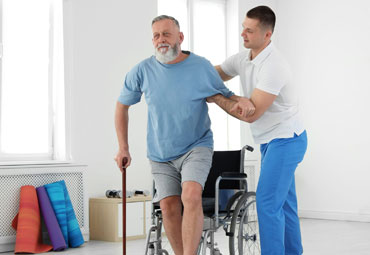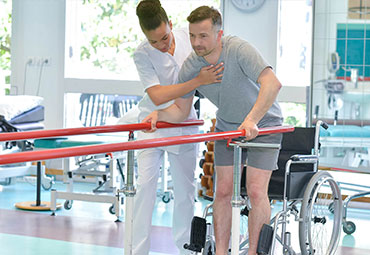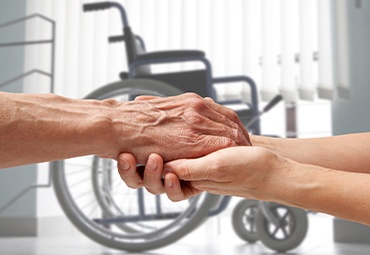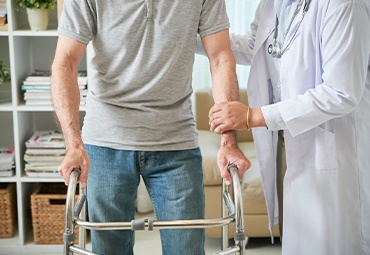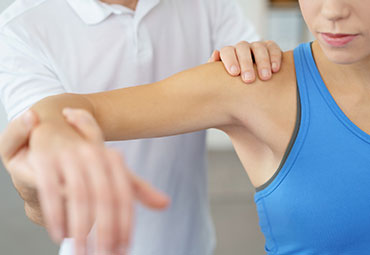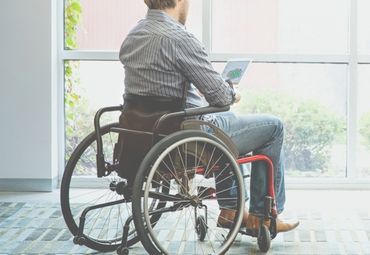
Muscular dystrophy can lead to differing levels of disability among people depending on the type of disease they have and how soon was it diagnosed. Some people with muscular dystrophy may be able to perform activities of daily living independently while some others may find activities like toileting and brushing teeth very challenging. ReAble Neuro experts suggest following tips for an effective self-care for Muscular Dystrophy patients (and their care givers, so they can help them live an active life.)
Managing Daily Life and Complications of Muscular Dystrophy
-
Stay active.
Stand and walk as much as possible. Being upright will keep your bones strong and your spine straight. Braces or standing walkers can make it easier to stand and get around. Consult your doctor to understand when to use braces or any other adaptive device.
- Use technology to your advantage.
Devices like phones, computers and tablets can help aide those with disabilities in their daily lives. Implementing technology that allow turning on lights with your smartphone, installing an automatic door opening system can make a lot of difference in staying self-reliant. Do not shy away from using technology for daily assistance.
-
Diet for Muscular Dystrophy.

Eat right. There’s no special diet for DMD, but healthy foods can prevent weight problems or help with constipation. Work with a dietitian to make sure you eat the right balance of nutrients and calories each day. You may need to see a swallow specialist if you (or your loved one with muscular dystrophy) have trouble swallowing.
-
Exercising with Muscular Dystrophy.
Exercise and stretches can keep muscles and joints limber and make you feel better. A physiotherapist can teach you how to exercise safely without overworking.
-
Manage your medications for Muscular Dystrophy.
Depending on what type of muscular dystrophy a person has and the progression of the disease, some people need medications for conditions that may develop as a result of the disease. Make sure you keep up with all the prescribed medicines.
-
Home modifications for better movement with Muscular Dystrophy.
A few practical changes in the home can help make life easier. The Muscular Dystrophy Association (MDA) offers these tips:
- Create a bedroom (and, if possible, a bathroom) on the main floor of the house.
- Place items of regular use on low shelves
- Consider widening doorways (or remove doors altogether) to allow for easier passage with a wheelchair, or install hinges that swing in and out.
- Use a lift or sling for getting in and out of the bed or bath.
- Install a floor-to-ceiling grab bar for help to get out of a chair or bed.
- Install railings in stairways, in the bathroom, and throughout the home, if needed for support.
- Add a ramp to avoid the need to use outdoor steps.
Before you invest a lot of money in home renovations, talk to your rehabilitation team, especially an occupational therapist, for advice on which changes will help the most right now.
-
Getting Around with Muscular Dystrophy.
You can adapt your own setting to be more suitable for getting around with MD, but you cannot change the whole world around you. Get to know which areas around you are accessible for people with disabilities. You may also consider modifications to your car to make entry and exit easier, as well as devices such as a cane or wheelchair, which can help you or your loved one be a bit more stable when out and about (even if they don’t use them normally). “With the right preparation and advance planning, travel can be enjoyable for someone with muscular dystrophy,” says Dr Sruthi Jain (PT) of ReAble Neuro Rehabilitation
-
Be Regular with your Rehab protocols.
Follow the Muscular Dystrophy rehabilitation program charted by your team of medical caregivers sincerely. Whether it is your physiotherapist, occupational therapist, nutritionist or respiratory therapist, be honest and communicative so that they can arrest symptoms early and help you stay mobile and complication-free.
-
Find support.
Other families living with BMD or DMD can be great resources for advice and understanding about life with the disease. Find a local support group or explore online discussion boards. It may also help you to talk about your feelings with a psychologist or counsellor
ReAble uses a team approach for success; with a team of specialists including physiotherapist, occupational therapist, speech and swallow therapist, nutritionist and rehabilitation specialist. An expert therapist will take a detailed assessment to understand the current condition and impairments of the Muscular Dystrophy patient. A customised rehabilitation plan will be designed based on the patient status and level of disability. Call us now or connect with us by filling the form below and we will be happy to help!
- Date:11 Oct, 2021
- Posted By:ReAble
- Categories:Caregiver Resources, Muscular Dystrophy
- Tags: Becker muscular dystrophy, Duchenne muscular dystrophy






